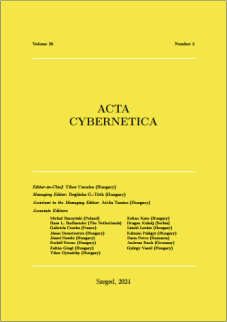The Influence of the Nonfunctional Requirements on the Data Model
DOI:
https://doi.org/10.14232/actacyb.299253Keywords:
FHIR, telemedicine, GUI, Firebase, Angular, modelingAbstract
During the design and development of real-world telemedicine applications, the data model evolves significantly along the datapath. The model itself, the storage technique, and the user interface are the most common contributors. This relates to non-functional requirements. The size and complexity of the domain model may also be significantly influenced by standards. This phenomenon is distinct from data model erosion, which occurs when the data model changes due to a software developer's fault and non-properly defined interfaces. This is occurring by design. We are unaware of any technique, including OMG's Unified Modeling Language (UML), that focuses on this aspect of complex systems: the change of the data model along the datapath. In this article, we investigate this phenomenon and, in addition to identifying the locations where this change may occur, we classify the modifications depending on the possible influence a specific model change may have on the system's overall properties. This paper presents a novel methodology for complex system datapath analysis and demonstrates its application to a selection of telemedicine-related applications. This technique illustrates the possible effect of non-functional requirements on the datapath and the potential consequences of these modifications.







